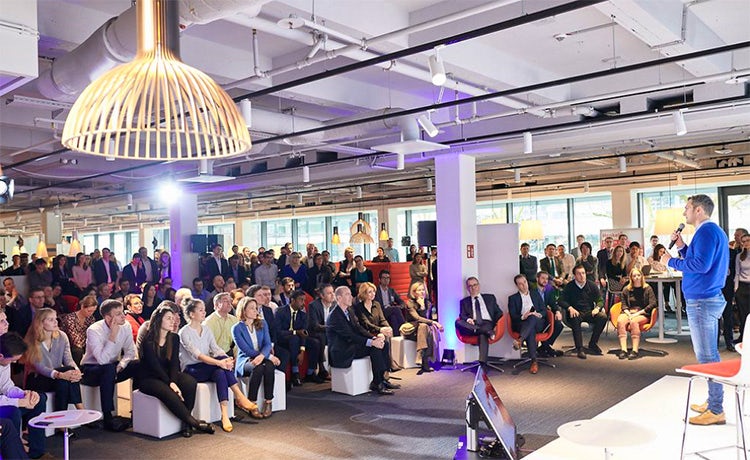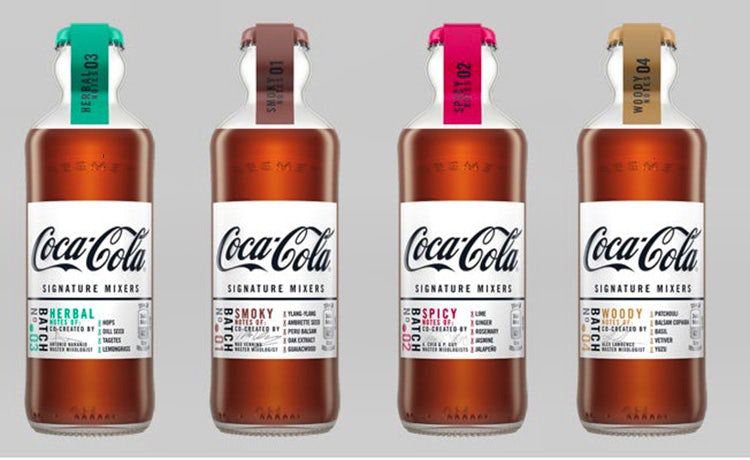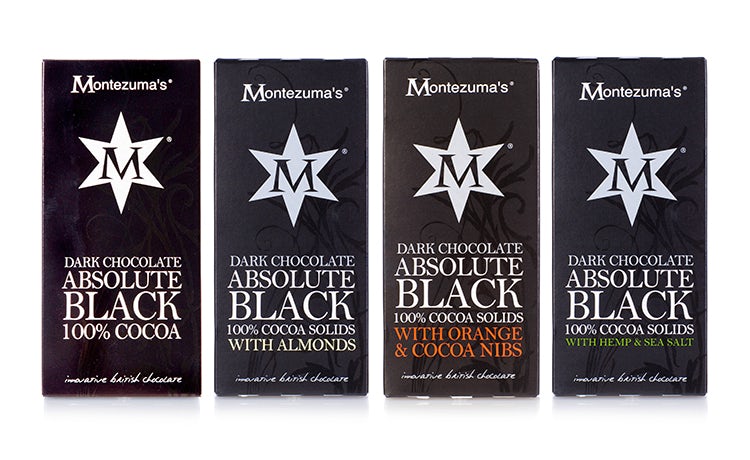The new rules of innovation

 Finding the next big idea to propel your company, not just into next year but into the next five, can feel like gold dust. Brands need to stay ahead of the chasing pack while taking the product and customer experience up a level, and evolving to compete with disruptors in the market. No easy task.
Finding the next big idea to propel your company, not just into next year but into the next five, can feel like gold dust. Brands need to stay ahead of the chasing pack while taking the product and customer experience up a level, and evolving to compete with disruptors in the market. No easy task.
In order to stay ahead brands are scoping out different methods to source their next innovation. Last year, PepsiCo introduced The Hive, a small entrepreneurial group operating outside the core headquarters, tasked with developing “new age brands”.
Meanwhile, Procter & Gamble (P&G) has shifted to a startup-style approach. Speaking at the Consumer Electronics Show (CES) in February, chief brand officer Marc Pritchard explained the company was simultaneously running 130 seed-stage experiments, which resulted in a series of innovations including a skin-printing device and a heated razor.
Achieving innovation is more of a cultural shift than an organisational one, which means creating a culture that embraces new ideas and challenges, says Andrew Lippman, associate director at MIT Media Lab and co-director of MIT’s communications futures programme. He suggests thinking about innovation like a fridge.
“You don’t want an empty refrigerator, you want a fridge that has some ideas in it so when you want dinner you can open it and find what you need,” he explains.
“Very often I think about what happens if the refrigerator is empty, because the ideas that fail don’t get preserved. Sometimes it’s important to build something just to put in the refrigerator for a while and then you’ll know when the time is right [to use it].”
People talk a good game of ‘fail fast’, but they don’t actually mean it.
Dr Rahmyn Kress, Henkel
As companies mature there is a tendency to narrow down their approach in order to be more efficient, when actually innovative ideas need to come from left field, Lippman argues. For this reason, he believes one of the best ways to innovate is to look outside the business and, in particular, among young people for inspiration.
“The best way to challenge the unspoken cultural restrictions that exist in companies is to listen to your summer interns,” he suggests.
“They walk in, see a process and have no history, so therefore they can question it. I’m a great fan of the notion of outsiders and youth as being the way to spark new thinking.”
Although not everything the intern says will be a perfect fit, Lippman insists it is better to have 20 ideas, even if only one is good, rather than just two ideas to choose from.
Product innovation or marketing strategy: What comes first?
Forget the fear
The fear of failure means brands often refuse to open themselves up to collaborate on innovation, argues Dr Rahmyn Kress, chief digital officer at German FMCG giant Henkel and co-founder of Henkel X.
“People are too afraid to fail and therefore they are secretive,” he says. “Usually people talk a good game of ‘fail fast’, but they don’t actually mean it. We have tremendous opportunities and if we don’t come together and unleash them at speed, we’re just going to forego them.”
This belief in the power of collaboration fuels Henkel X, an innovation ecosystem launched in February 2018 incorporating 180 mentors from venture capital, entrepreneurs and the C-suite, together with global industry leaders in sectors as diverse as pharmaceuticals, automotive, fashion, FMCG and retail. The Henkel X partners come together to tackle innovation challenges for the benefit of the wider business sector, pooling resources to find a solution.

An important aspect of the ecosystem is Henkel X show and tell, a series of events that bring together the mentors and businesses with startups. The startups pitch their latest concept, while the mentors talk about the current trends in the market.
If the startups can help solve a problem the wider Henkel X ecosystem is working on, the partners will pay for the team to work on a proof of concept study and then move towards collaborating on an MVP (minimum viable product).
“We treat them at eye level as if they were a large technology company and we don’t waste their time,” Kress explains. “Many large corporates have used startups and founders as a cheap resource, instead of consultants, to get an idea of what’s out there and that is totally disrespectful and demeaning.”
An idea can come from anyone, anywhere and in any way. If you make just a small group of people responsible for innovation, you take away the culture of ideas.
Debbie Epstein, Montezuma’s
To date there have been 15 show and tell events globally and now 150 startups a month apply to take part. In the first year alone, 23 startups pitched, 18 of them had their proof of concept study funded and seven signed long-term contracts with Henkel.
Kress explains the Henkel X approach is a world away from corporates setting up accelerator programmes or opening incubators, which often have no contact with the real world and therefore can grind to a halt when they hit a problem. Collaborating via the Henkel X ecosystem means partners often reach an answer within six to eight weeks.
Embrace co-creation
Kress cannot understand why brands would secretively work on developing different types of technologies when it is better to work to a common standard. He insists that if businesses, entrepreneurs and startups come together, they can establish a standard others can use to invent new technology.
To this end, Henkel X has developed an Institute of Entrepreneurship in the UK, Italy, Spain, Germany, Asia and North America. Any partner from the network can put forward a problem they are looking to tackle and the PhD and MBA graduates will pick up the challenge as the basis of their thesis.
The opportunities for collaboration have also been explored at Coca-Cola, which chose to tap into cocktail culture for the development of its new range of Signature Mixers.
Coca-Cola moves into alcohol market with premium mixers
Linking up with people outside the business, Coke experimented with leading mixologists from around the world on more than 200 contemporary and traditional ingredients, before settling on the four premium mixers to bring to market.
Launched in May, the mixers are designed to be paired with dark spirits and come in four flavours – Herbal, Smoky, Woody and Spicy. Kris Robbens, marketing director for Coca-Cola Great Britain and Ireland, says the Signature Mixers were inspired by the comeback of dark spirits, following a decade-long ‘ginnaisance’.

“Inspired by our heritage and provenance, we wanted to partner with some of the world’s leading expert mixologists to maximise the taste of Coca-Cola and give dark spirits the very best complex and distinctive taste,” he explains.
Although the development of the Signature Mixers involved external collaboration, for the release of its first Coke-branded energy drink – Coca-Cola Energy – teams collaborated across numerous territories and functions within the business.
Widen the ideas pool
The notion that good ideas can come only from an elite group of people within a business is becoming increasingly outdated.
Instinctively against the idea of having 400 to 500 people sat in a “digital ivory tower”, Kress built an app to ensure every Henkel employee is kept up to date with what is going on at Henkel X. The news feed content tells the teams about the topics up for discussion, upcoming events and the startups Henkel X is working with.
The app also features an AI-powered ‘ideas jar’ where employees can drop in an idea, which is automatically grouped with similar ideas from elsewhere in the organisation. Henkel then hosts internal design challenges involving every division in the business. The teams work on a prototype with one of Henkel X’s partners, which is presented to the senior leadership team, meaning every employee has the chance to become an entrepreneur.
New product development (NPD) should be in everyone’s job description, agrees Debbie Epstein, marketing director at chocolate brand Montezuma’s. Innovation, she says, should be inclusive and not the exclusive pursuit of a small number of people.

“An idea can come from anyone, anywhere and in any way,” says Epstein. “If you make just a small group of people responsible for innovation, you take away the culture of ideas.”
Montezuma’s works on a three-year innovation pipeline, spanning everything from range extension to new “hero products” for each season in a process of constant innovation management. Then, when it comes to which ideas to pursue, Epstein considers the “size of the prize” in terms of how big the opportunity and the target market really are.
“Is it 10% of the demographic or is it actually 1%? So, the other side of it is our willingness to take a risk and go out there regardless of the fact it’s only 1% of the population,” she explains.
“Sometimes we won’t know [it will be successful], because it’s a trend, but it is about that willingness to take a risk to say: ‘We want to be first to market’. Somebody has got to start it, so it’s a balance between being commercially responsible and being opportunistically astute.”
Challenge complacency
As a market leader, it can be easy to let complacency creep in. This is often more about losing the ability to face an outside threat, says Lippman at MIT Media Lab, who cites the case of the big four US pizza companies – Domino’s, Pizza Hut, Little Caesars Pizza and Papa John’s.
While they were trying to take market share off each other, the sector was disrupted by Zume Pizza, a San Francisco-based company that uses mobile kitchens and automated smart ovens to deliver pizza. The pizzas are pre-made in a central location before being heated up in the truck and served in recyclable, stackable boxes.
Lippman argues that while the big chains had been thinking about tactics to beat their competitors, they were not ready for a challenge that rewrote the game. When faced with a challenge of this kind a brand can fight, which means it is already on the back-foot, or it can take the lead and adapt.
“I’m sure the pizza companies are looking at Zume and half of them are sitting there and saying ‘it won’t go anywhere or we can fight this’, and the other half are saying ‘wait a minute, why haven’t we got a better idea in our refrigerator with which to fight this?’,” says Lippman.
Food delivery giant Just Eat is constantly observing changing consumer behaviour and seeing how these trends play out across other industries. For example, the teams observe how other organisations are addressing the issue of ‘disruptive distribution’, which is a big area of interest at Just Eat.
“A really good example is the NHS emergency blood transfer system on motorbike,” says Just Eat product director Storm Fagan.
“There is much higher urgency behind what its doing, but it’s trying to move an item with a short lifespan as quickly as possible without damaging it and that’s exactly what we’re trying to do with food. We can learn a lot about how it has optimised the system.”
As well as looking at the wider customer environment, Just Eat uses a mix of quantitative and qualitative data to better understand customer behaviour, all the way down to micro-interactions on its products. The team A/B test every development from a shift in the communications strategy to changes to the product. The trick, says Fagan, is to filter the insight to work out what is important.
“The skill of the teams comes into how you prioritise, so you can get the most value for customers, restaurants and couriers immediately,” she explains.
“A good example of this is our single customer view, which we built as part of our global platform. The insight you can get on an individual customer level is amazing and is enabling us to develop personalised experiences.”
It is important to look at the “levels of innovation” explains Fagan. Sometimes the team will be working three to six months out, while on other occasions the long-form discovery team will be needed to unpick more ambiguous challenges and decipher where the real opportunities lie.
To achieve this, Just Eat has built two frameworks for innovation. The first, known as the ‘jobs to be done’ framework, looks outside the food space to understand what people are trying to achieve in their lives. Through this framework, Just Eat sees what it calls an ‘opportunity cost’, such as the time taken to cook versus going to the gym or watching a film.
The second ‘outcome driven innovation’ framework grades the jobs captured in the first framework based on which are least served in the market.
“It doesn’t give us anything around how to solve those problems, that’s what we then put to the teams and that will give us an agnostic way of looking at the opportunities,” Fagan adds.
Looking outside their category for inspiration, opening themselves up to co-creation and welcoming ideas from every part of the business will be the hallmarks of the brands leading the next level of innovation.
Andrew Lippman is a keynote speaker at the Festival of Marketing 2019, which takes place on 10-11 October at Tobacco Dock, London. Visit to find out more.
The post The new rules of innovation appeared first on Marketing Week.
